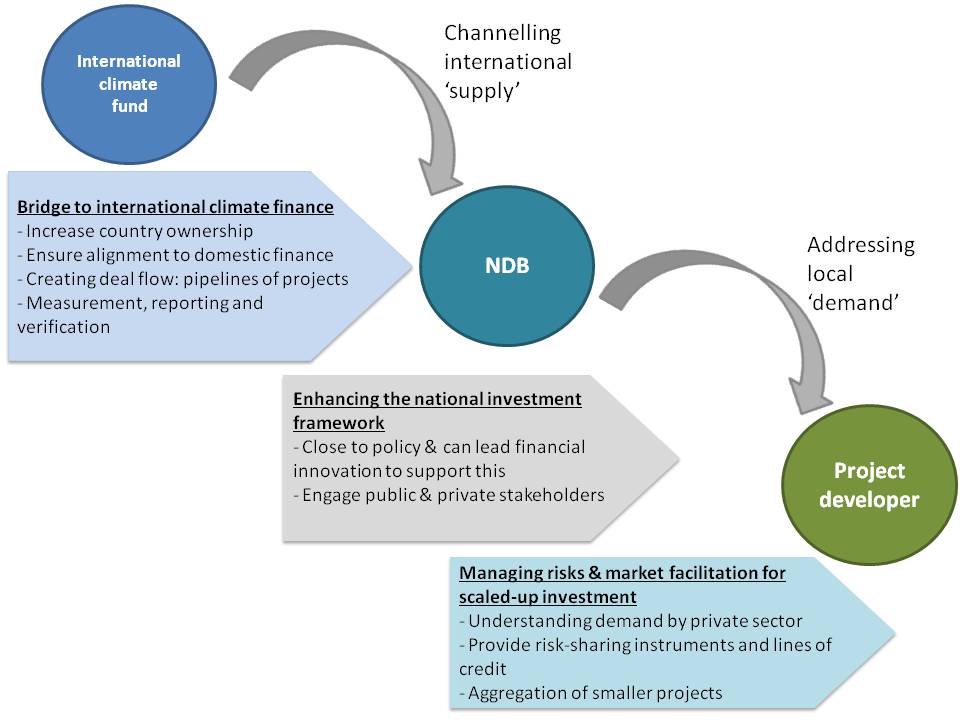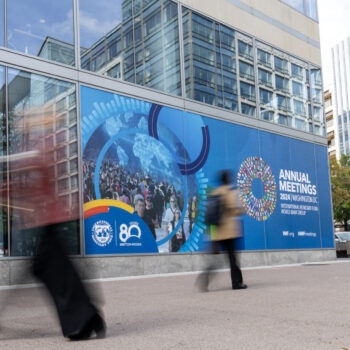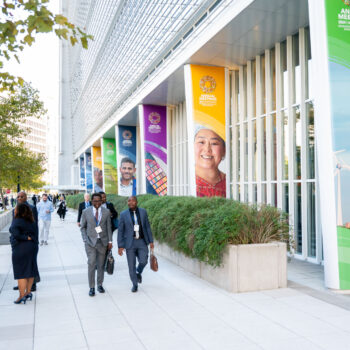Insights from Latin America and Asia-Pacific
Over the last few months, a major focus of E3G has been on the role of national development banks (NDBs) in deploying climate finance for transformational impact.
In the first half of 2015 E3G has been working with the Asian Development Bank (ADB) and the Inter-American Development Bank on strengthening the capacity of public financial institutions for accessing and utilizing climate finance, particularly from the Green Climate Fund (GCF) for low-carbon, climate-resilient investments. The team presented at workshops in Manila and Mexico City.
Through this work E3G has gained insights into the challenges and opportunities faced by NDBs’ in financing countries low carbon and resilient transitions. In particular:
- NDBs’ are well placed to understand the local context and provide financial instruments that are tailored to overcome specific risks. Proximity to local private sector actors and markets also provides DFIs with valuable opportunities to be the bridge between public policy makers and commercial project developers, banks and investors.
- NDBs are well positioned to channel international climate funds. Experience with existing climate funds has demonstrated the benefits of involving NDBs in financing climate friendly infrastructure, mostly in partnership with multilateral and bilateral finance agencies.
- NDBs can also enhance country ownership of climate financed programs. Subsequently, there is an increasing focus on the role of NDBs in direct access to climate funds.
The figure below sketches NDBs’ role in bridging supply of international climate finance and local private sector demand while enhancing the national investment framework:

The workshops in Manila and Mexico City showed very different levels of experience with regards to financing low-carbon projects and accessing international funds. In Asia-Pacific many NDBs are only just starting to focus on how to finance low-carbon and resilient infrastructure.
Support required to strengthen capacity
Many institutions require assistance to increase their capacity for understanding both the opportunities and specific risks associated with low-carbon and climate-resilient investments. Increased support for identifying and designing appropriate financial instruments was also recognised. In that sense, international climate funds can be important catalysts for strengthening NDBs' capacity and knowledge of climate related investments.
Within Latin America, there are some examples of NDBs who have engaged a lot with international funds: Mexico’s NDB Nafin and Bancoldex from Colombia have been involved for many years with Climate Investment Funds (CIFs) projects. During discussions, the need to exchange experience was emphasized. The Latin American NDB association ALIDE supports this kind of exchange through its technical committee on climate and environmental financing and the Interamerican-Development Bank through an online platform Finanzas Carbono.
Accreditation to the GCF?
Many NDBs expressed their interest in getting accredited to the GCF, but also recognised the challenges in accreditation. For example compliance with fiduciary standards and social and environmental safeguards can be difficult if the bank is not yet advanced in these matters. As the application for accreditation to the GCF is so far only possible in English, another challenge is found in translating relevant documents. NDBs regarded GCF´s fit for purpose approach positvely and the possibility of upgrading their accreditation as they develop their standards further.
Project pipelines have been a central topic during discussions, not at least in the context of the GCF. Many institutions participating in the Mexico workshop mentioned the difficulty in disbursing funds and loans to appropriate projects and the need for scale and portfolio approaches for the SME sector.
Sharing experience
A major take-away from both workshops is the importance of collaboration and exchange of experience, not only amongst NDBs, but also between international climate funds like the Global Environmental Facility (GEF), the CIF and the GCF. For instance, the CIF’s experience in Latin America with involving NDBs in designing country investment plans provides valuable lessons for the GCF.
At the same time, whilst the experience in one region can be valuable for sharing with other regions, barriers specific to the local banking sector may need to be addressed for successfully replicating approaches.
In summary, there needs to be a common effort by international and national public finance institutions in piloting, learning and sharing experiences of how to deploy climate finance for implementation of countries low carbon and climate resilient development paradigms.



